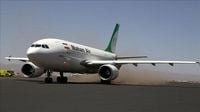Iran has taken significant steps to ease air travel restrictions following a turbulent 12-day conflict with Israel, reopening its central and western airspace to international transit flights. This development marks a cautious return to normalcy in the region’s skies after the country shut down its airspace entirely on June 13, 2025, in response to Israeli airstrikes targeting Tehran and other key locations.
The Roads and Urban Development Ministry announced on Saturday, June 28, 2025, that the reopening of these airspace corridors was approved by Iran’s Civil Aviation Organization (CAO) after thorough safety and security assessments conducted by relevant authorities. According to ministry spokesman Majid Akhavan, the eastern airspace had already been reopened earlier in the week, allowing domestic, international, and transit flights to resume operations in that region.
Despite this progress, flights to and from airports in the northern, southern, and western parts of Iran—including major hubs such as Tehran’s Mehrabad and Imam Khomeini airports—remain suspended. The CAO clarified that airspace in these restricted zones would stay closed until 14:00 local time (10:30 GMT) on Sunday, June 29, 2025, pending further evaluation. Travelers and residents have been urged to avoid these airports and monitor official announcements closely for updates on flight operations.
The closure of Iranian airspace had a significant impact on international air routes across the Middle East, disrupting long-haul flights that connect Europe and Asia. The reopening of the central and western corridors is expected to alleviate some of this pressure by restoring vital transit pathways. This is especially important given Iran’s strategic position as a bridge between continents.
State-aligned media outlet Nour News reported that the reopening followed a partial resumption of domestic and international flights on Thursday, June 26, 2025, signaling a gradual restoration of air travel services. The Roads and Urban Development Ministry’s statement emphasized that the reopening was a direct consequence of the ceasefire achieved earlier this week, on Tuesday, June 24, 2025, which ended the aerial hostilities between Iran and Israel.
Majid Akhavan highlighted that the eastern half of the country is now fully open for flights, including transit operations and activities involving regional airports. Notably, airports such as Mashhad and Chabahar, which had been affected during the Israeli offensive, have resumed operations. This reopening offers a glimmer of relief for both the aviation sector and travelers who rely on these routes.
The conflict itself was triggered by a series of Israeli airstrikes launched against Tehran and other Iranian locations, prompting Iran to respond with missile launches. The resulting aerial conflict lasted 12 days and led to the unprecedented closure of Iranian airspace, illustrating the severity of the hostilities and their broader implications for regional stability and international travel.
With the ceasefire now in place, Iran’s decision to reopen parts of its airspace reflects a strategic move to restore connectivity while still prioritizing safety. The phased approach—starting with the eastern airspace, followed by central and western corridors, and maintaining restrictions in certain areas—demonstrates a cautious balancing act amid ongoing security concerns.
This reopening also holds significance beyond Iran’s borders. The Middle East serves as a critical hub for international aviation, and disruptions here ripple through global air traffic networks. By gradually restoring its airspace, Iran is helping to stabilize these routes, benefitting airlines and passengers worldwide.
However, the continued closure of airports in northern, southern, and western regions, including Tehran’s major airports, indicates that full normalization remains some way off. Authorities have not yet provided a timeline for reopening these areas, underscoring the fragile nature of the current peace and the need for ongoing vigilance.
For travelers and airlines, the situation remains dynamic. The CAO’s statement about the closure lasting until Sunday afternoon serves as a tentative marker, but further developments will depend on the evolving security landscape and diplomatic efforts to maintain the ceasefire.
In the meantime, the reopening of Iran’s airspace in key regions is a welcome sign of progress following a period of heightened tension and disruption. It highlights the critical role of aviation in connecting nations and the delicate interplay between geopolitics and global transportation.
As Iran cautiously navigates this new phase, the international community will be watching closely to see how the situation unfolds and whether further steps toward full airspace normalization can be achieved in the near future.

